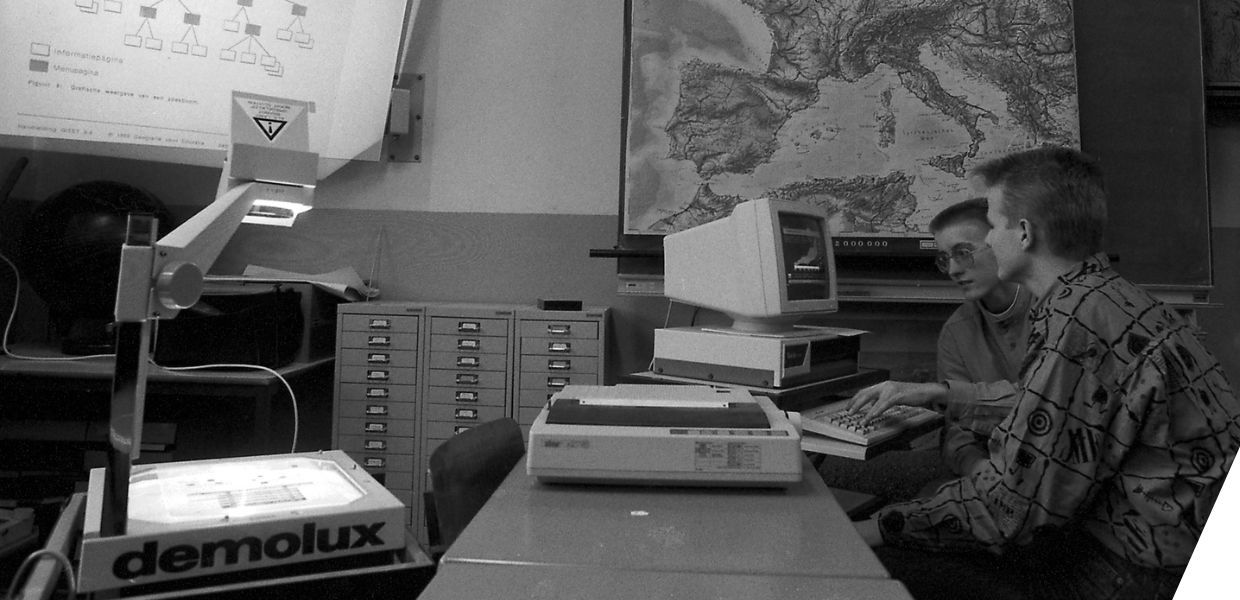When it comes to their goals, interests, and context, a web audience can differ in several key ways compared to an in-person audience. The fact that this audience accesses content online means that it is important to consider its accessibility and the languages in which it’s presented.
Comparing web and in-person audiences
A web audience is likely to have a shorter attention span for information than an in-person audience. Expect people to spend under one minute on a webpage, so keep the text to a minimum and the key information near the top of each page.
It’s important to understand the specific goals of your web audience, which may differ from the audience which visits your collections in person. For example, according to this study from the Dutch Digital Heritage Network (in Dutch), web audiences on cultural heritage sites are often looking for a specific object or acquiring targeted information, in addition to browsing and discovering.
It is also likely that many of your online visitors will be accessing your site and collections via their mobile phone. This means that it is a good idea to test your website to see how it looks and works on mobile. You may want to make the mobile design slightly different so that it works better on the smaller device size. In general, mobile sites benefit from having a slightly reduced amount of text, and slightly enlarged buttons (for easier finger-tapping). More tips for improving the mobile user experience can be found in the Nielsen Norman Group article Mobile Site vs. Full Site.
Web accessibility: three key things to consider
A website may be used by many different people, with many different abilities, in many different contexts. It is important to support the various needs of your audiences by ensuring your website is accessible.
Colour contrast: Buttons, text, and other parts of your website should stand out enough from the background, in order to be seen by everyone. You can do this by ensuring there is a high enough contrast between them. Lean towards a higher contrast (such as black text on a white background) and avoid low-contrast pairings (light grey text on a white background). Remember that certain colour combinations can be tricky as well - for example, people with red-green colour blindness may not easily distinguish green text from a grey background. There are online tools such as browser plugins which can help you assess the contrast of your website, such as the WAVE Evaluation Tool for Google Chrome and the WCAG Contrast Checker for Firefox.
Text size and readability: It is generally advised that all text on your website is size 16px or higher. In addition to ensuring your text is large enough, you can improve its readability by ensuring your lines of text are not too long (45 to 75 characters) and not positioning text on top of distracting backgrounds (such as images).
Devices such as screen readers: Many people prefer to use devices such as these to navigate websites. It's a good idea to consider improving the experience for these users. For example, ensuring all of your images have alt text greatly improves the experience of people using screen readers.
For more information, and to assess how accessible your site is, visit the Web Content Accessibility Guidelines (WCAG) website, which is a standardised resource providing guidelines for accessibility online. You can also read about Europana’s approach to web accessibility.
Multilingualism
Offering content online has great potential to widen your audience, as a website can be accessed by people from across the world. This means that for your website, you may want to offer other language options in addition to the native language of your country. For example, if your web analytics tell you that you have many visitors from English-speaking countries, adding an English language option to your site may help them access your collections.
Another thing to consider could be matching additional languages to your collections, especially if they reflect the stories of minority groups with their own languages or dialects. On Europeana.eu, much effort is made to support all 24 official European languages. This makes sense for our platform, as we support pan-European collections, providing institutions and audiences.
It’s important to keep in mind that offering additional languages may require an additional service (and increase in price) within your website’s content management system (CMS) subscription. For example, the CMS Squarespace has an additional service called Weglot, which requires a paid plan after 2,000 translated words or more than one language. Another thing to be aware of is that these translations are likely auto-translated (rather than translated by people), which increases the risk of error. In some cases, to ensure the highest quality translations, you may prefer to hire one of many translation services where the translations are done by human experts. While this likely has a larger increase in cost, the resulting translations are more likely to be of a higher quality.
Find out more
If you enjoyed this post, look out for the next in the series: tracking and reporting web visitor traffic. Now that you have some information to get you started with building your basic website, in the next post we’ll look at how to create the best experience for your online audience.
You can also read about the practices we follow at Europeana for website development, including our development processes, best practices, and tools we use to ensure our application is robust and resilient.


